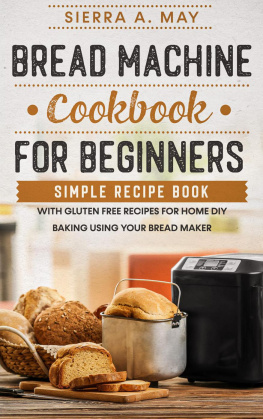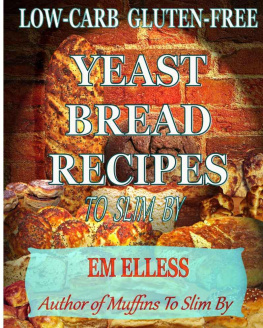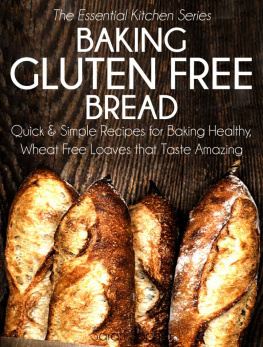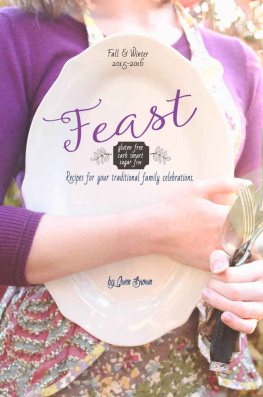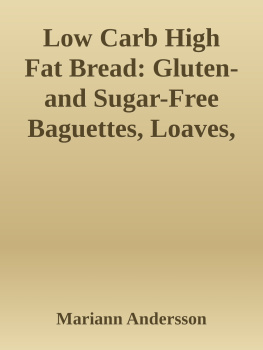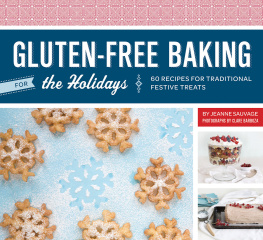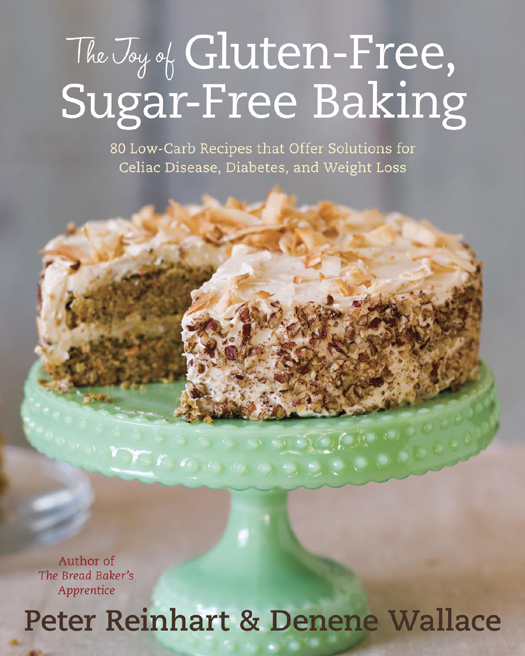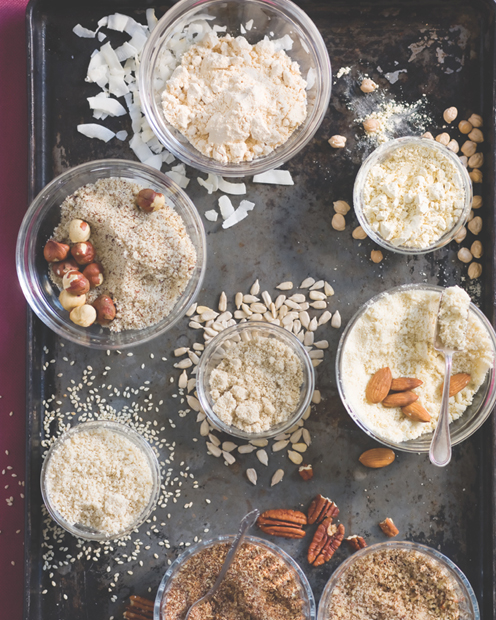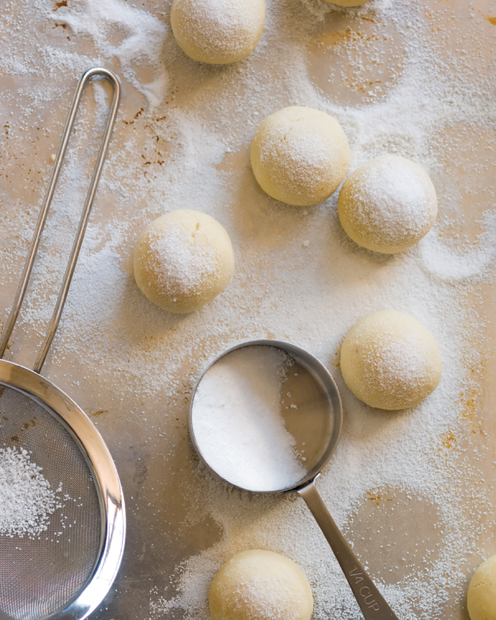The information contained in this book is based on the experience and research of the authors. It is not intended as a substitute for consulting with your physician or other health-care provider. Any attempt to diagnose and treat an illness should be done under the direction of a health-care professional. The publisher and authors are not responsible for any adverse effects or consequences resulting from the use of any of the suggestions, preparations, or procedures discussed in this book.
Copyright 2012 by Peter Reinhart and Denene Wallace
Photographs copyright 2012 by Leo Gong
Foreword copyright 2012 by Dr. Tom Schneider
All rights reserved.
Published in the United States by Ten Speed Press, an imprint of the Crown Publishing Group, a division of Random House, Inc., New York.
www.crownpublishing.com
www.tenspeed.com
Ten Speed Press and the Ten Speed Press colophon are registered trademarks of Random House, Inc.
Library of Congress Cataloging-in-Publication Data
eISBN: 978-1-60774-117-6
Food styling by Karen Shinto
Prop styling by Christine Wolheim
v3.1
Contents
CHAPTER ONE
Breads and Rolls
CHAPTER TWO
Pizzas and Focaccias
CHAPTER THREE
Crackers, Breadsticks, and Pretzels
CHAPTER FOUR
Muffins, Scones, Pancakes, Waffles, and Other Breakfast Treats
CHAPTER FIVE
Cookies
CHAPTER SIX
Brownies, Cakes, and Coffee Cakes
CHAPTER SEVEN
Pies
Foreword
When I speak to groups, I begin by telling them that at least one person in the room has experienced heart disease, kidney failure, morbid obesity, type 2 diabetes, cardiac bypass surgery, multiple vascular stents, ridiculously high cholesterol, stress-induced and explosively high blood pressure, gluten sensitivity, and cancer. I dont mean that people in the group have collectively experienced these conditions, rather that there is one individual present who has survived them all. They find it hard to believe, then I explain that its my own health recorddespite the fact that theyd never guess it since I appear to be a fit and vibrant man in his late sixties. I recount how many of my medical woes began during my fighter pilot days in Vietnam, where I experienced multiple exposures to Agent Orange. After the war, I aggressively pursued two contrapuntal paths: intensive medical studyfrom family practice to a specialty in surgery and another in bariatrics, plus certifications such as ABBM, FACS, and ASBPand a self-destructive lifestyle. Ultimately, after cheating death numerous times, I began focusing on my own wellness and applied what Id learned in my medical studies to my life.
When I met Denene Wallace, a fellow survivor of nearly fatal diabetes who had regained her health by applying a new, nutrition-based angle to her treatment, I felt like Id met a kindred spirit. I happily consumed the many breads, cookies, and other treats she baked for me, and incorporated her dietetic approach in my own mealswhich led to deeper levels of healing in my own conditions. Celiac disease, obesity, diabetes, and heart disease wont just go away; they must be managed day by day through constant self-discipline and support. Thats why I am so excited that Denene joined with Peter Reinhart to share these recipes so anyone struggling with these issues can use them to build wellness.
Denenes story, which youll read shortly, is a compelling testament to the power of being an active participant in your health management; it underpins many of the following key points on gluten intolerance, diabetes, and obesity that form the foundation of my practice.
Gluten intolerance, whether due to celiac genetic disorders or caused by other factors, often progresses from mildly annoying conditions such as colds and aches at first into a full-fledged hypersensitivity disease that requires daily vigilance. It becomes a life or death survival battle. Many symptoms of disease, such as chronic headaches, insomnia, skin rashes, and fatigue, can often be traced to gluten sensitivity even without the presence of genetic celiac disease. Eliminating or significantly reducing gluten can often alleviate these symptoms and address the condition before it becomes a full-blown disease or does further harm.
Type 2 diabetes is often an outcome of obesity, which in turn perpetuates weight problems. Obesity affects a huge proportion of the American population, and is probably the single greatest health challenge of our time. Excess weight becomes disease when the body can no longer manage the condition on its own and stops functioning as it should.
Diseases like diabetes and celiac do not go away; they must be managed. Type 2 diabetes can often be managed without insulin or medication (in conjunction with medical supervision) by adjusting the diet to eliminate excessive carbohydrates. Insulin is produced naturally in the pancreas, and its role in our body is to convert carbohydrates (and proteins, to a lesser extent) into stored fat cells, creating a reserve of emergency energy for our body. However, when we overload the pancreas and it cant keep producing insulin to deal with excessive carbs in our system, overeating morphs into the diseases of obesity and diabetes. Simple solution: get rid of the carbs to stem insulin overproduction.
The best way to reduce carbs is to stop eating the foods that contain themespecially those without fiber. On the flipside, eating foods that are high in dietary fiber is healthful in many ways, especially because they can somewhat balance out the carb load, moving carbs through the digestive system quickly and shielding the body from insulin production overload. Finally, replace high carb foods with alternatives that are high in protein. Denene and Peter have done just that, by exchanging carbohydrate- and starch-loaded flours for nut and seed flours with high amounts of protein and healthy fats.
Attaining health and wellness involves both complex and straightforward steps, but it is always simpler to deal with conditions before they become full-blown diseases. The recipes in this book provide an easy way to replace disease-causing foods with those that promote health and can even reverse the effects of disease. They will also bring you joy and well-being, which is an important part of my own formula for healing. My core belief is that while celiac, diabetes, and obesity are all diseases, the solution is not a pill. To manage or reverse them requires lifestyle changes; you have to take charge of your own body and make a commitment to a lifelong wellness path. This book is a new toolI advise you whole heartedly to use it; it will change your life, I promise.
Dr. Tom Schneider, MD, FACS, ABBMHealthspan Institute, Spring, 2012
Introduction
OPENING WORDS FROM PETER
I am not sensitive to gluten, as my previous books attest. However, neither am I immune to the dietary challenges brought about by the passionate consumption of products made with wheat, as anyone who has seen me also knows. There was a time when I was lean and mean, and then I opened a bakery and began a love affair with bread products of all types. Back in 1971, when I was twenty-one, I participated in a communally operated vegetarian restaurant in Boston in which no white flour, white sugar, or white rice was permitted to cross the threshold. I read everything I could find on nutrition and various popular food philosophies of the time, such as macrobiotics, raw foods and sprouts, wheat grass therapy, food combining, and juicing. I even met Jack LaLanne, one of my personal fitness heroes. For three years I ate only organically grown food and unrefined whole grains, and all of my childhood allergies and food sensitivities seemed to fade away. At five feet six inches, I weighed a lithe 136 pounds and felt great. At the end of those three years we sold the restaurant and everyone moved on, and in the next phase of my journey, I once again became an omnivore.


